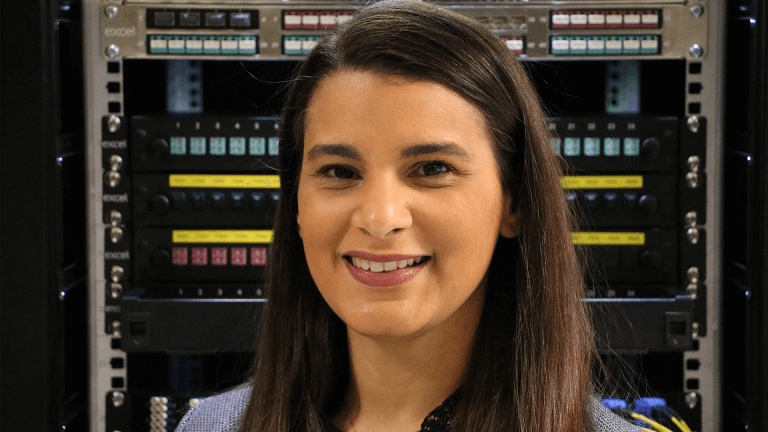Stock market corrections have a nasty habit of surprising both investors and their advisors, usually when they are least prepared. The worst corrections can take years if not decades to recover, causing investors loss of sleep in the short term and significant loss of capital in the long term.
The Laureola Investment Fund has been a steady performer through recent market turbulence in the global stock markets. It has proven its credentials as a genuine alternative strategy, and is capable of delivering positive returns in all market conditions.
This fund invests in the asset class of life settlements in the USA. In the United States, it is both legal and encouraged for an individual to sell his life insurance policy to an investor. The insurance policy then becomes a financial asset called a life settlement.
Probably the most impressive aspect about this type of investment is that life insurance companies in the USA have never missed paying the death benefit on a valid life insurance policy since 1864. This is a track record unmatched in investment and banking.
Life Settlements currently trade at an average Yield (IRR) of 16%, with a range of 12% to 25%. As such, the safety, predictability, and double digit returns are an attractive combination, and are not available in other asset classes.
In terms of its history, the legal basis for life settlements in the USA was established in 1911, in the Supreme Court decision delivered by Justice Oliver Wendell Jones. Today, the Government encourages insureds to consider selling unwanted policies by not including the proceeds in calculations to determine eligibility for government funded health care.
With over $17 trillion of life insurance outstanding in the USA, the source of policies available for a possible settlement is not an issue. So far less than 1% have been sold to investors.
Furthermore, a stable and growing supply is also ensured because the seller benefits from the transaction in several ways. Most policies are sold by senior citizens (aged 65 ), and the senior receives an immediate cash payment from the investor. This payment on average is between three and four times what the insurance company would pay. Moreover, the senior no longer has to pay the premiums, and therefore frees up future cash flow. Together these enable the senior to have a more comfortable and enjoyable retirement, and, in some cases, pay for necessary medical treatments which the senior could not otherwise afford.
The best feature of the asset class is the genuine non-correlation with stocks, bonds, real estate, or hedge funds. Consequentially, life settlement investors will make money when others can’t.
The fund is structural, and can be confirmed with a straightforward qualitative analysis. For a well structured portfolio of life settlements to make money, the insureds have to die, and the insurance company has to pay. The former is (unfortunately) beyond question, the latter has been universally true for over 150 years.
Both of these factors provide reliable foundations on which to build an investment strategy.
Neither has any dependency on or connection with stock prices, interest rates, commodity prices, or the economy. Nor is there any connection to general levels of confidence in the capital markets. Perhaps best of all, the asset class generates its own liquidity internally and does not require other investors to come in and buy the assets at a higher price.
A properly structured life settlement portfolio delivers double digit returns even in the absence of price increases, and can do it in all environments. As a result, the asset class boasts some very powerful economics.
However, even the best strategies in the best asset classes require proper implementation. This is especially true in less transparent and less liquid asset classes such as life settlements. Life settlement investing requires a unique set of skills including: knowledge of life insurance, life settlement experience, legal and portfolio management expertise, fund structuring and design capabilities, and access to the deal flow.
We provide our clients with a wealth of experience that ensures that the best strategy is properly implemented. Our CIO, Christopher Erwin, is a member of both the Orange County Bar Association and the Life Insurance Settlement Association. He has over 10 years’ experience in all aspects of evaluating and transacting life settlements, and has built a successful business in these fields. He has sourced and serviced nine figure life settlement portfolios in the past, and now brings this expertise to the Laureola Fund as Chief Investment Officer and as an investor.
Chris is supported by a group of nine life settlement professionals at his two life settlement related businesses in California. Through his network built up over the past decade and through the life settlement brokerage he owns, Chris ensures that the Laureola Fund has access to the best policies at the best prices. One of our main differentiating factors is that many of the policies purchased by the fund since inception were never shown to the rest of the life settlement market.
Personally, I have over 30 years’ experience in portfolio management and fund design and structure. I graduated with an MBA and have been accredited the CFA designation. My responsibilities mainly include the day to day operations of the Laureola Fund.
This fund has been designed with multiple layers of protection for the investors, and is much more than most other offshore funds. Moreover, the fund suppliers are globally recognised and leaders in their respective fields. They include: Apex (Fund Administration), Lewis & Ellis (Actuarial Consultant and Valuation Agent), Bank of Utah (Custodian), Bermuda Monetary Authority (Regulator), and Deloitte (auditor). Furthermore, the fund is on a fund platform in Bermuda with an EAM (an affiliate of Apex) as the platform manager. EAM oversees the fund’s activities on a daily basis.
Laureola Advisors was founded in 2013 by myself and Chris to take advantage of the opportunities in this asset class. The Principals invested their own capital, and other interested investors are invited to join. Despite currency crises and share price shocks, the fund has delivered.
Like all investment strategies, life settlements do have some risks. The most important are longevity risk (individuals living longer than expected) and cash flow risk (there must be money to pay the premiums).
Longevity risk must be assumed in any investment based on longevity, including life settlements. This risk is manageable by competent portfolio managers, and can be further reduced using the competitive advantages of Laureola Advisors.
From our experience in the life insurance industry, the widely held assumption that everybody is living longer is not actually supported by a detailed analysis of the statistics. The reality is that some are living longer, while some are not.
Advances in medical treatments can now cure or manage many ailments that people used to die from 25-50 years ago, extending the life expectancies of individuals aged 50-70. However, the life expectancy of individuals aged 85 has not budged in many decades, and in some years has actually decreased, and nature simply takes its course.
Statistics also show that life expectancies have been routinely overestimated for individual with certain ailments, and for certain segments of the population. This knowledge has been particularly useful in the management of the Laureola Fund.
The ability of the Laureola Fund to acquire quality assets at below market value is also useful in longevity risk management – it provides a margin for error that other investors won’t have. The fund will typically generate a profit on every policy it buys even if the individual lives twice as long as expected, which is very rare. As for cash flow risk, this is entirely in the control of the portfolio manager and can be virtually eliminated, simply by keeping the necessary liquidity reserves on hand.
The risks in life settlements are clearly identifiable and easily managed, and in some cases they can be eliminated. Compared to the increasing turbulence in capital markets and the growing appetite of all governments for market manipulation, the risks in life settlements are moderate. The asset class has a risk level between that of equities and government bonds, perhaps closest to that of the real estate markets.
Despite this low level of risk, the returns are significantly better than any of these traditional asset classes and also has the important benefit of having no correlation with any of them, making them a genuine alternative. As a result, experienced investors who require both growth and diversification are increasingly allocating to life settlements. We assure them that they will sleep better through the next round of market turmoil.
For further information please contact:
Tony Bremness
[email protected]
www.LaureolaAdvisors.com























